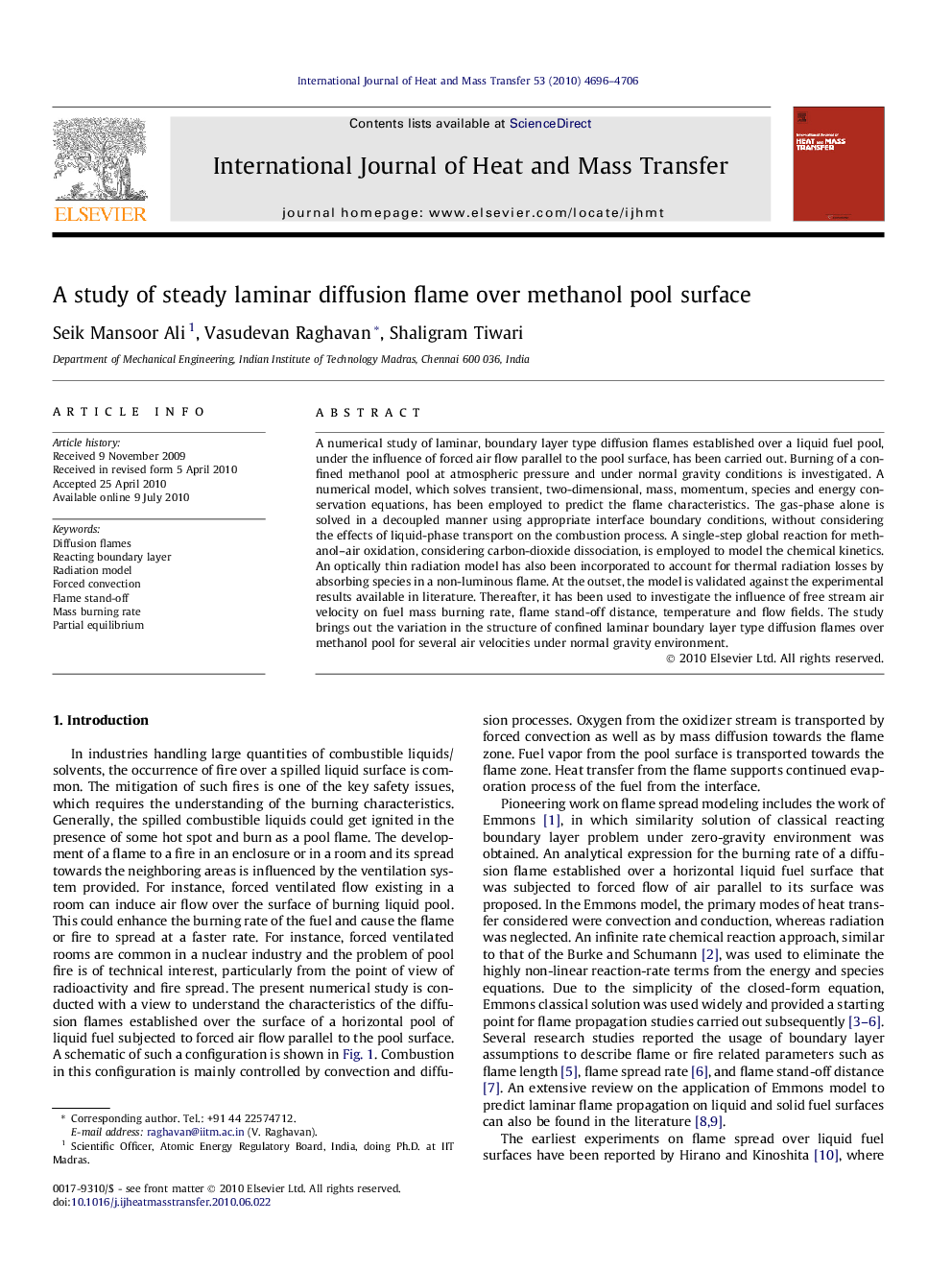| Article ID | Journal | Published Year | Pages | File Type |
|---|---|---|---|---|
| 660475 | International Journal of Heat and Mass Transfer | 2010 | 11 Pages |
A numerical study of laminar, boundary layer type diffusion flames established over a liquid fuel pool, under the influence of forced air flow parallel to the pool surface, has been carried out. Burning of a confined methanol pool at atmospheric pressure and under normal gravity conditions is investigated. A numerical model, which solves transient, two-dimensional, mass, momentum, species and energy conservation equations, has been employed to predict the flame characteristics. The gas-phase alone is solved in a decoupled manner using appropriate interface boundary conditions, without considering the effects of liquid-phase transport on the combustion process. A single-step global reaction for methanol–air oxidation, considering carbon-dioxide dissociation, is employed to model the chemical kinetics. An optically thin radiation model has also been incorporated to account for thermal radiation losses by absorbing species in a non-luminous flame. At the outset, the model is validated against the experimental results available in literature. Thereafter, it has been used to investigate the influence of free stream air velocity on fuel mass burning rate, flame stand-off distance, temperature and flow fields. The study brings out the variation in the structure of confined laminar boundary layer type diffusion flames over methanol pool for several air velocities under normal gravity environment.
